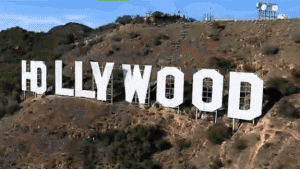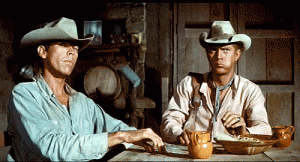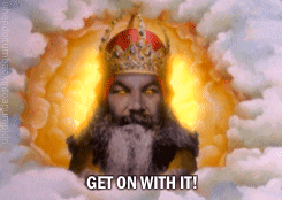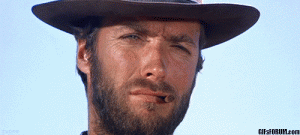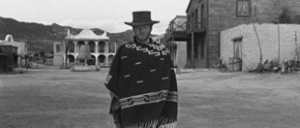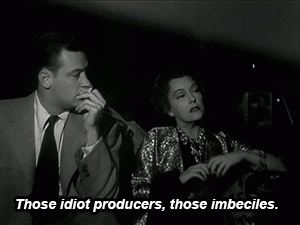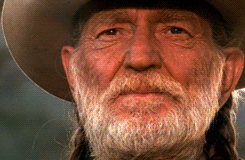Country music and Los Angeles have had a complicated relationship since the early 20th century. Singing “cowboys” like Gene Autry and Roy Rogers rose to fame in the 1930’s through the 50’s starring in Western radio and TV shows and singing songs about life on the cattle trail. While they dressed the part, these Hollywood cowboys weren’t authentic. Many of their songs praised American values such as independence and family values, which were challenged in the 1960’s by the counterculture movement. Starting in the 1960’s, country singers in L.A. began challenging this idealized portrayal of America and the glamorous world that Hollywood built up around itself. While many of these musicians sang about their grievances with L.A., many like Willie Nelson and Lyle Lovett had to reconcile these views with their ambitions of being future stars of the silver screen.
This list starts out with songs that glorify the idealized Old West of Hollywood films. We’ll then move into the later half of the 20th century where many music artists such as the Flying Burrito Brothers began to criticize L.A. and mainstream American culture. The last two featured artists in this article didn’t belong to the counter-culture generation of the 1960’s but they ended up having similar criticisms of Los Angeles.
Let’s start out with one of the most famous singing cowboys of the 20th century.
“Happy Trails” (1952) by Dale Evans & Roy Rogers
This song was the theme of The Roy Rogers Show (Radio: 1944-1955, TV: 1951-1957 ) and was released as a single in 1952. Roy Rogers was an actor from Cincinnati, Ohio who got famous as a “singing cowboy” and became an American star on Radio, Tv, and Film. The song has a carefree sing-along feel, “Who cares about the clouds when we’re together? Just sing a song and bring the sunny weather.” In the Youtube comments for the video, Linda Johnson remarks, “ This song brings back so many happy childhood memories!” This show being geared towards kids reflects the family values and optimism of the 1940’s and 1950’s and romanticizes the life of the cowboy as depicted in Westerns in Radio, TV, and Film. This marks the establishment of the Hollywood version of the Old West engrained in our imaginations: Saguaro cacti, tumbleweeds, and a white hat wearing good guy fighting off the black masked bandit to save his sweetheart.
“Back in the Saddle Again” (1939) by Gene Autry
This song was written by another singing cowboy and actor, Gene Autry, along with Ray Whitely. The song was Autry’s biggest hit and is about a cowboy doing typical things that a cowboy would do in a Hollywood Western. The speaker praises the simple yet exciting life he lives:
“Ridin’ the range once more,
Totin’ my old .44,
Where you sleep out every night,
And the only law is right,
Back in the saddle again”
Like the previous song, “Back in the Saddle Again” follows the Hollywood style of country music popular at the time that was used to sell movies and patriotism. This one talks more specifically about the cowboy life such as longhorn cattle, guns, and riding horses but it still presents the same values.
“Sin City” (1969) by The Flying Burrito Brothers
The Flying Burrito Brothers formed in 1968 and released their first album The Gilded Palace of Sin in 1969. Led by Gram Parsons, this psychedelic country rock band toed the line between the opposing cultures of country music, which aligned with family values and conservatism, against the emerging rock and roll and hippie scene, which embraced more liberal social views. In the blog Songplaces.com Dan MacIntosh states, “On one hand, they were part of the rock & roll establishment….yet the country music they loved preached a lot of family values.” This comes through in the song “Sin City”. The song portrays the city of Los Angeles as a center of vice that “will swallow you in.” The song scorns the “sinners” of L.A. and is ripe with biblical references: “On the thirty-first floor your gold plated door, won’t keep out the Lord’s burning rain.”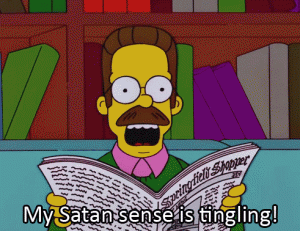
On the other hand, the song feature’s rock and roll fuzz guitar and many of the members were avid drug users—Gram Parsons himself later died of a heroin overdose. This definitely didn’t fit with the idealistic, conservative country music coming out of the L.A. area when songs like “Happy Trails” and “Back in the Saddle Again” were released, but the themes of family values interestingly do. With the coming of the 1960’s, we start to see the death of the previous clean image of country music that came out of L.A. with the singing cowboys. The Hollywood cowboy that inspired so many proved to be an illusion, much like the promise of stardom that drew so many to the L.A. film business.
The country singers in Southern California also became just as jaded as many of these aspiring actors. From the time of “Back in the Saddle Again” to “Sin City” the population of L.A. nearly doubled. Race riots, such as the Watts Riots, which claimed the lives of thirty-four people plagued the city. The 1960’s brought social change to America as a whole and questions began to be asked about America’s views on Civil Rights, Gender, and Sexuality, and the “City of Angels” was no exception.
“Bloody Mary Morning” (1973) by Willie Nelson
Willie Nelson was a clean-cut country singer who turned 180 degrees in the late sixties. He grew out his hair and moved to Austin to pursue creative freedom and felt at home with the hippie movement picking up there at the time.
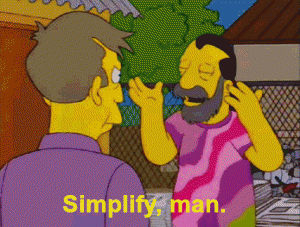
The song “Bloody Mary Morning” deals with his wife leaving him. He finds the big city, especially L.A. and the temptation brought on by it as a cause of this split up. In the second verse, he sings,
“All the night life and the parties
And temptation and deceit
The order of the day
Well it’s a Bloody Mary Mornin’
‘Cause I’m leavin’ baby somewhere in L.A.”
Much like “Sin City,” this song sees L.A. as an enabler of bad decisions almost as if you can’t control yourself there. Themes expressed in this song, like a family breaking up was also more acceptable at this time than in the early half of the 20th century where family was paramount and divorce wasn’t an option. This also aligns with the cultural changes in America in the later half of the century that are shown with bands like The Flying Burrito Brothers. An interesting difference between Willie Nelson and the Flying Burrito Brothers however is that Willie had aspirations of being a movie star which makes his views on the city of Los Angeles much more complicated.
“L.A. Freeway” (1975) by Guy Clark
This song was written by Texas songwriter Guy Clark and popularly recorded by Jerry Jeff Walker. It’s about Guy and his wife Susanna moving away from L.A. and back to the South. The verses have a feel of carefree relief as he and his wife pack up their things, and he tells her, “say goodbye to the landlord for me, son uva’ bitch has always bored me.” He goes on to say that, “If we can just get off of this L.A. Freeway without getting killed or caught” he’ll find somewhere else they can live even though he hasn’t made any arrangements yet. His hurried plea to move back home comes from a place of homesickness but possibly also because of the vices that The Burrito Brothers and Willie Nelson warn about. He feels like he just might die if he can’t escape L.A.
His hurried plea to move back home comes from a place of homesickness but possibly also because of the vices that The Burrito Brothers and Willie Nelson warn about. He feels like he just might die if he can’t escape L.A.
The image of the freeway is also interesting because it is such a big contrast against the cowboy imagery presented earlier by Roy Rogers and Gene Autry. The cattle trail isn’t well defined or necessarily crowded and there’s a certain freedom to the vast swathes of open land that lay ahead. On the other hand, a freeway is congested and made of cheap concrete; each person is expected to stay in their own painted lane in a hurried pace. I think that this comparison illustrates the point that Guy Clark is trying to make in that he feels like his family needs to be back in the South where the pace of life is relaxed.
“L.A. County” (1987) Lyle Lovett
“L.A. County” first appeared on Lyle Lovett’s second album, Pontiac (1987). The song is about a man in Dallas who is in love with a girl who runs off to L.A. because she falls in love with another man there. The speaker in the song then drives to L.A. and shoots them dead at the wedding wi th his “coal black .45” pistol. This is another song that doesn’t have a happy ending which is consistent with the other song’s on this list that came after the 1950’s. This time, it isn’t drugs and parties, that lead the protagonist astray, but L.A. becomes the setting for his crime of passion. This also wouldn’t fit in with the kid friendly world of the country songs of L.A. in the singing cowboy days, but it also is a story that doesn’t align with 60’s counterculture. In the words of Lyle Lovett, “I don’t know what I originally intended. I was just sort of telling the story and it ended up like that” (Hutchinson). This song isn’t as socially charged as “Sin City” or “Bloody Mary Morning” but it does deal with a woman leaving her man for L.A. like “Bloody Mary Morning”. In this picture, L.A. becomes a place where families can’t survive, which could be the reason why Guy Clark felt the need to escape. Lyle Lovett also like Willie Nelson wanted to achieve fame in film. While they both had songs that criticized L.A as a city, both of them met moderate success in the film industry, which compromises their authenticity to a certain degree.
th his “coal black .45” pistol. This is another song that doesn’t have a happy ending which is consistent with the other song’s on this list that came after the 1950’s. This time, it isn’t drugs and parties, that lead the protagonist astray, but L.A. becomes the setting for his crime of passion. This also wouldn’t fit in with the kid friendly world of the country songs of L.A. in the singing cowboy days, but it also is a story that doesn’t align with 60’s counterculture. In the words of Lyle Lovett, “I don’t know what I originally intended. I was just sort of telling the story and it ended up like that” (Hutchinson). This song isn’t as socially charged as “Sin City” or “Bloody Mary Morning” but it does deal with a woman leaving her man for L.A. like “Bloody Mary Morning”. In this picture, L.A. becomes a place where families can’t survive, which could be the reason why Guy Clark felt the need to escape. Lyle Lovett also like Willie Nelson wanted to achieve fame in film. While they both had songs that criticized L.A as a city, both of them met moderate success in the film industry, which compromises their authenticity to a certain degree.
“I Sang Dixie” (1988) by Dwight Yoakum
From Rolling Stone Magazine, “With its keening fiddle and general morbidity, I Sang Dixie is as forlorn as a Civil War lament.” The song, by Dwight Yoakum, was released in 1988 on the album Buenas Noches from a Lonely Room. It’s about the narrator finding a homeless man from the South dying on the streets of L.A. The speaker 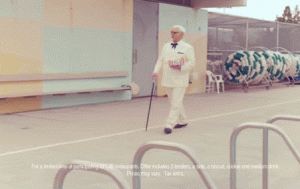 sings Dixie so that the man can reminisce about being home in the South. As he sings, people walk by who pay no attention to the dying man. In the song, Dwight sings, “He said way down yonder in the land of cotton, old times there ain’t near as rotten, as they are on this damned old L.A. street.” The themes of vice (liquor) and a town full of bad people are similar to “Sin City” and “L.A. County” while the homesickness aspect is much more similar to “L.A. Freeway.” This is another song that goes against the idealized views expressed in the earlier songs of Roy Rogers and Gene Autry and instead sees parts of America as morally broken (L.A.) while other parts (The South) remain pure.
sings Dixie so that the man can reminisce about being home in the South. As he sings, people walk by who pay no attention to the dying man. In the song, Dwight sings, “He said way down yonder in the land of cotton, old times there ain’t near as rotten, as they are on this damned old L.A. street.” The themes of vice (liquor) and a town full of bad people are similar to “Sin City” and “L.A. County” while the homesickness aspect is much more similar to “L.A. Freeway.” This is another song that goes against the idealized views expressed in the earlier songs of Roy Rogers and Gene Autry and instead sees parts of America as morally broken (L.A.) while other parts (The South) remain pure.
Country music both from and about L.A. has been affected strongly by the changing times. In the early to mid 20th century, singing cowboys praised American family values and independence and created an almost utopian view of the Old West through country music. With the 1960’s came social upheaval and the country music around L.A. took a darker turn. Country musicians then began to sing about the vices of the city and how they ruined the lives of good people, or caused them to pick up and leave town. The idealized world created in Hollywood Westerns through songs like “Happy Trails” and “Back in the Saddle Again” became shattered by new perceptions of country singers singing leaving on an “L.A. Freeway” before they’re killed or caught. itself. Over time, L.A., where Gene Autry sang “I’m back in the Saddle Again, Out where a friend is a friend” became, in country music’s eyes an “old town filled with sin that’ll follow you in.”
Sources
MacIntosh, Dan. ” Song: Sin City by Flying Burrito Brothers.” Sin City by Flying Burrito Brothers in Los Angeles, California. Songplaces, n.d. Web. 30 Mar. 2016. http://www.songplaces.com/SinCity/LosAngelesCalifornia
Drell, Cady. “Dwight Yoakam, “I Sang Dixie” – 40 Saddest Country Songs of All Time.” Rolling Stone. N.p., 26 Sept. 2014. Web. 30 Mar. 2016. http://www.rollingstone.com/music/lists/40-saddest-country-songs-of-all-time-20140926/dwight-yoakam-i-sang-dixie-20140926
Youtube comments for video “Dale Evans & Roy Rogers”
Hutchinson, Lydia. “Happy Birthday, Lyle Lovett!” Performing Songwriter Ent LLC. N.p., 1 Nov. 2012. Web. 30 Mar. 2016.http://performingsongwriter.com/lyle-lovett-interview/

